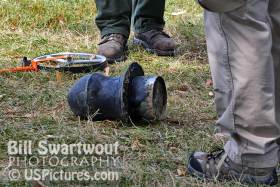 Just imagine a chunk of steel, larger and much heavier than a “24 Pounder” cannon ball – skipping just above the ground – at or near the velocity of cannon fire – through a crowd of spectators – for a distance of 150+ yards. It could have been devastating.
Just imagine a chunk of steel, larger and much heavier than a “24 Pounder” cannon ball – skipping just above the ground – at or near the velocity of cannon fire – through a crowd of spectators – for a distance of 150+ yards. It could have been devastating.
The breech failure occurred on September 16, 2014, the last day of Baltimore’s Star Spangle Celebration, as visiting ships departed the Inner Harbor. When they sailed by the Water Battery at Fort McHenry they were given a cannon “salute” as they set off for distant ports. The breech failed during a four-cannon salvo as the Pride of Baltimore II and the Coast Guard Eagle were leaving. The National Parks website reported the basics of the failure the day after it happened. Surprisingly I did not see much coverage by Baltimore media, but one, a simple mention that downplayed the breech failure, caught my eye, a week later.
Had this happened two or three days earlier, when there were many, many thousands of people at the Fort, it would have made national news. Why? Because of the massive crowd, there likely would have been several people killed and/or injured.
I was there and would like to explain, and show, what happened – as I understand it. First up is a photograph of the newly donated and newly manufactured “24 Pounder” cannon known as Beason’s son.
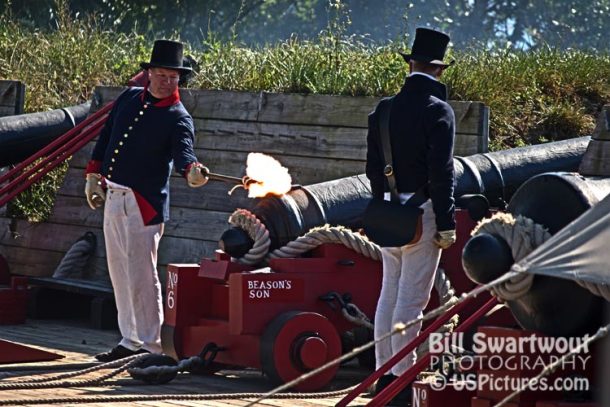
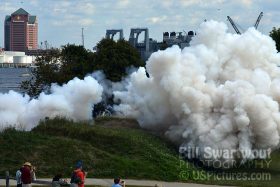 In the photo to the right you can see the smoke from the salvo of cannon fire saluting the departure of the Eagle and the Pride of Baltimore II. Note that the plume of smoke on the left is about half the volume of the other plumes (click the image for a better view). That is because half of the explosive force exited the REAR of the cannon. That “backfire” – as mentioned in the local news article – was much louder than what most people think of as a backfire (the noise a car makes). This was an explosion that broke the welds holding the breech in place and hurled it rearward at high, and potentially lethal, velocity.
In the photo to the right you can see the smoke from the salvo of cannon fire saluting the departure of the Eagle and the Pride of Baltimore II. Note that the plume of smoke on the left is about half the volume of the other plumes (click the image for a better view). That is because half of the explosive force exited the REAR of the cannon. That “backfire” – as mentioned in the local news article – was much louder than what most people think of as a backfire (the noise a car makes). This was an explosion that broke the welds holding the breech in place and hurled it rearward at high, and potentially lethal, velocity.
Fortunately, because of so few people being in the area, no one was hurt, maimed or killed. There was one reported injury, and that was a burn on the hand of one of the persons involved in the firing.
So how far backward did this cannon part travel?
Far enough that, had this happened on the preceding Saturday or Sunday, it might have traveled through dozens and dozens of people. The breech traveled nearly one-tenth of a mile, well over 150 yards, about three-fourths of the way to the Fort McHenry Visitor Center.
Keep in mind that this “backfire” (as reported by some media) was actually a chunk of metal (iron/steel) about four times the weight of a cannon ball and moving about half the speed of a cannon ball. (I am “guesstimating” the speed because the blast came out of the back of the cannon, not the front.)
A cannon ball used in war can be fired into the air to travel a long distance, such as for hitting a ship in the Patapsco River – or- fired almost horizontally, designed to “skip” along the ground at “human height,” to tear through legs and torsos of advancing troops. A shot from this size cannon, a 24-pounder, can travel through 25-30 bodies before expending its energy.
In the image below the “first skip” occurred a dozen yards (or so) behind the cannon. The other “skips” are marked as the projectile careened toward the Visitor Center.
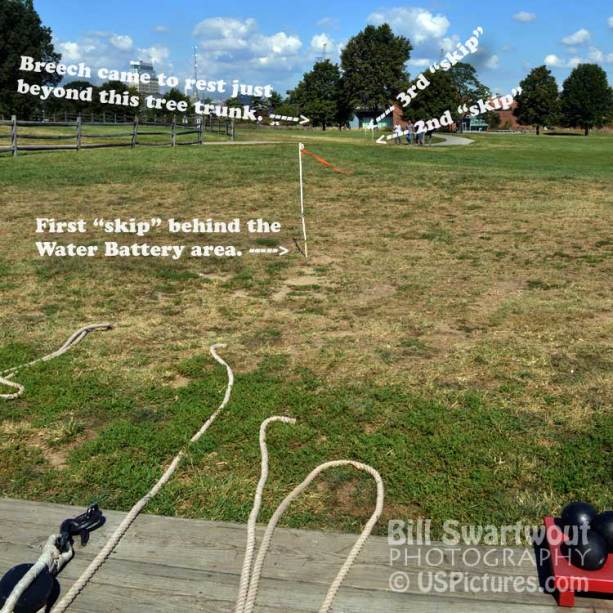
This next photograph is where the projectile (the dislodged breech) came to rest – looking up the hill to where the cannon exploded, nearly 1/10th of a mile up the hill.
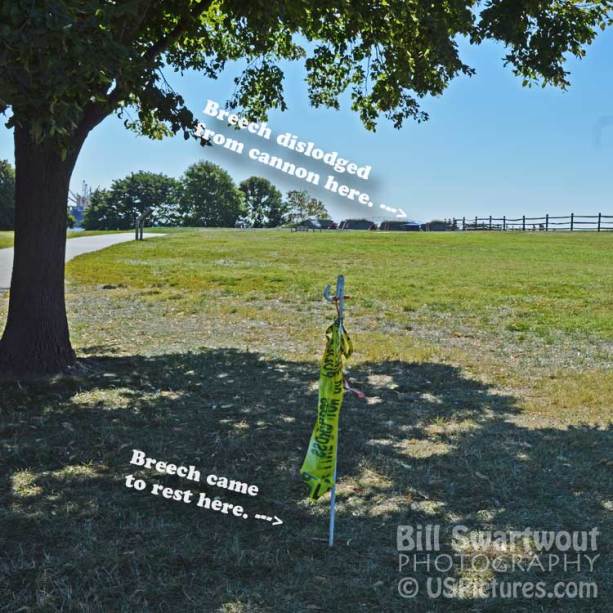
This article is a work in progress. We are waiting to hear what the cannon manufacturer, Cannons Online, has to “say” and/or what they do about repairing or replacing the cannons.
Yes, wall art prints and home decor items are available with photographs of Fort McHenry. Click images above or the link below to see more photographs and shop, if you like.
Link to: Bill Swartwout Fort McHenry Wall Art.
Terrific job of factual reporting!